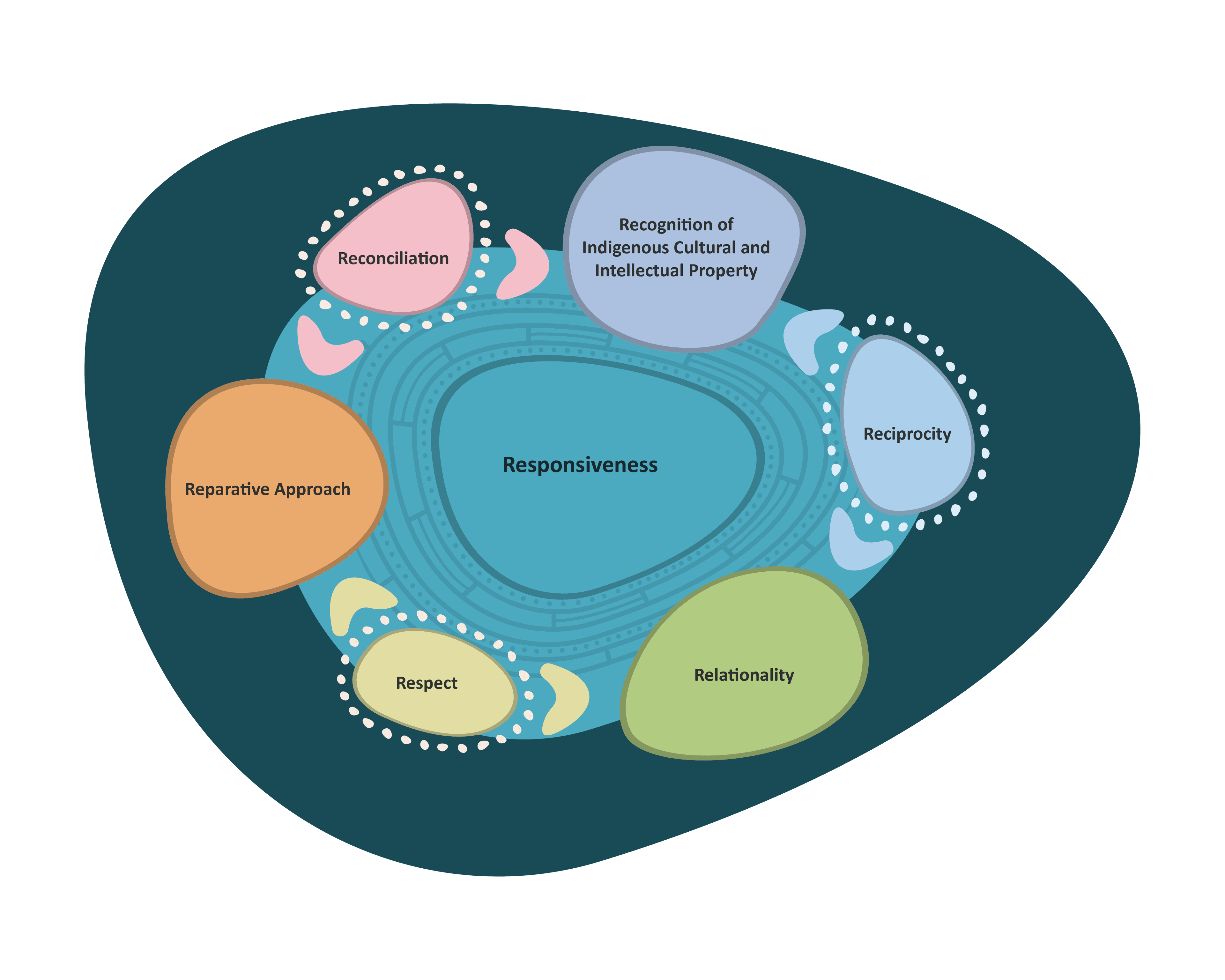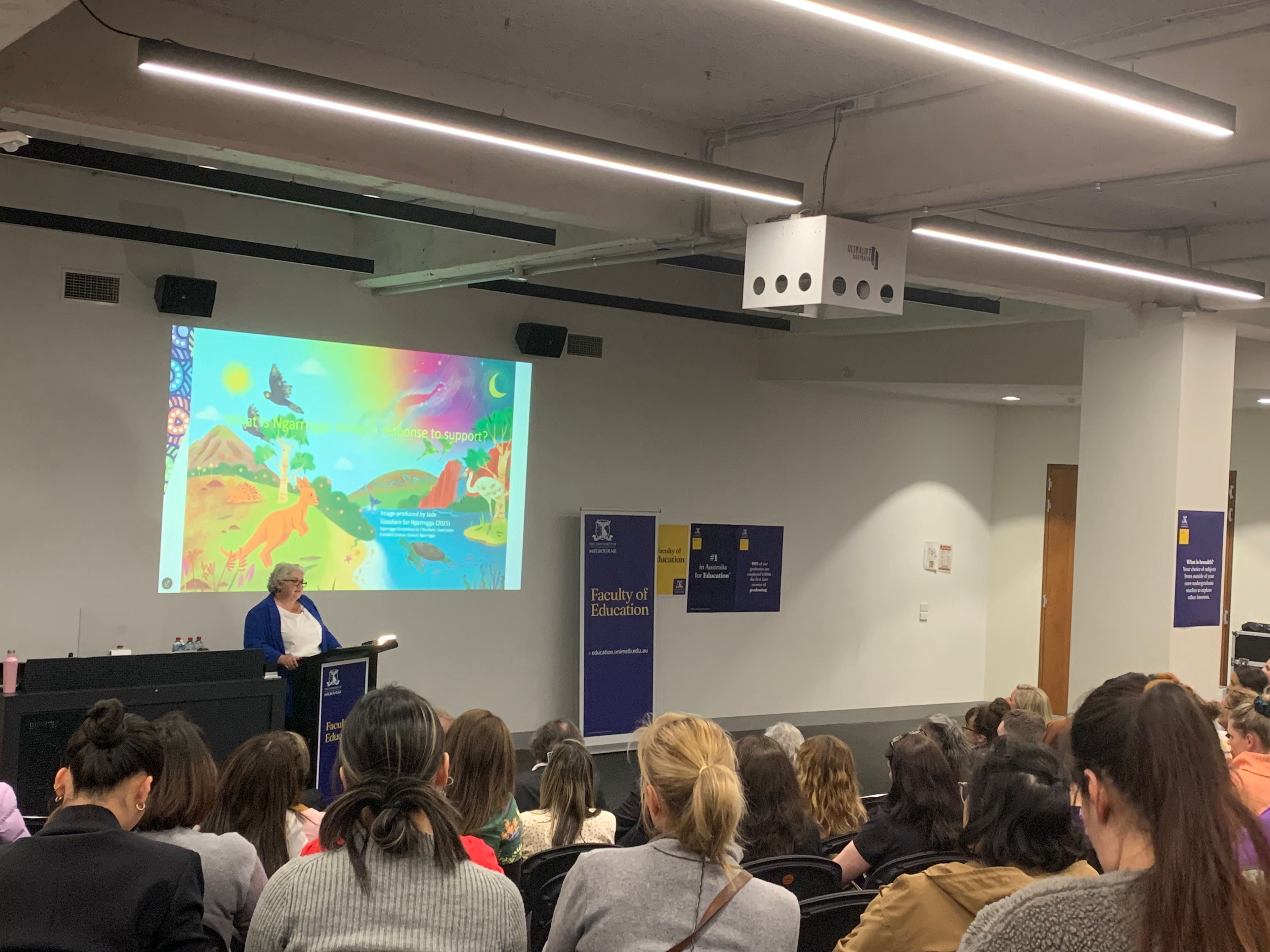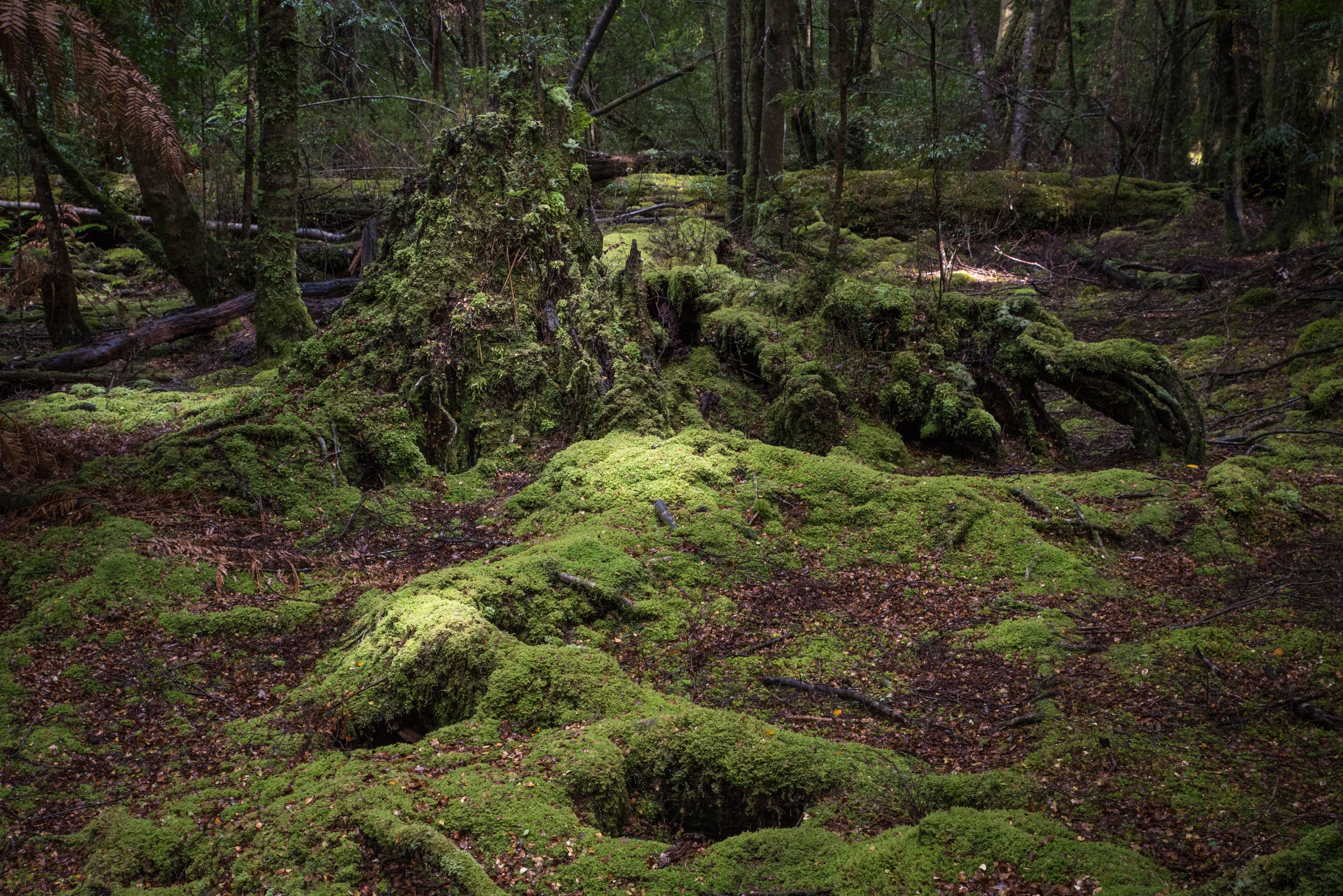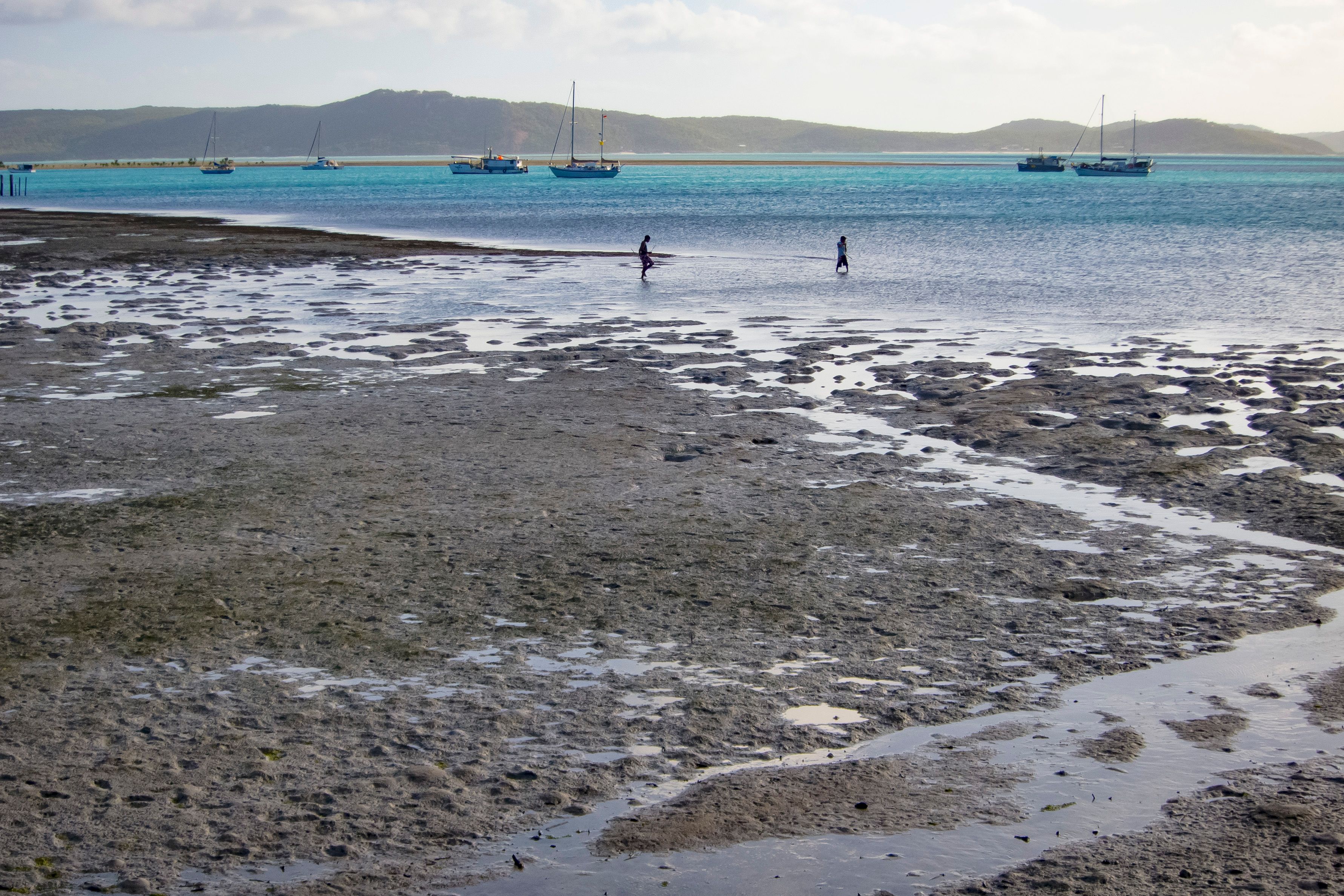Home/Stories and news/Bridging Content and Contexts - Culturally responsive pedagogies for museum education

Bridging Content and Contexts - Culturally responsive pedagogies for museum education
Museums have historically played a role in perpetuating colonial practices that silenced Indigenous stories and knowledge. However, by acknowledging and reckoning with this history, museums are now working towards becoming powerful spaces that elevate Indigenous voices.
‘At the centre of these negotiations is agency and an insistent voice from Indigenous actors who have insisted on our rights, as well as on the responsibilities of the colonial museum.’
Professor Sandy O’Sullivan, (2023, p. 336).
This year's theme for International Arts Education Week (May 19-25, 2025), Stand Up and Stand Strong, calls for educators to take a firm stance. Through their efforts to redefine their role, museums create spaces where educators can stand alongside art, artists and curators to champion truth, transformation, and change (MacDonald & Hogarth, 2024).
This article explores the importance of adopting culturally responsive pedagogies in museum settings to foster meaningful engagement with Indigenous Knowledge and perspectives. We highlight the need for educators to critically reflect on their approaches, uphold Indigenous Cultural and Intellectual Property rights, and embrace opportunities for truth-telling and reconciliation.
Culturally responsive approaches: A necessity
Culturally responsive pedagogies are crucial for examining history's events, actions, lessons, and impacts through an open, multifaceted lens. They are vital for fostering meaningful engagement with Indigenous knowledge.
Rather than treating Indigenous Knowledge as a static body of information to extract meaning from, a culturally responsive approach recognises Indigenous Knowledge as an evolving, dynamic system that should be engaged through genuine dialogue, open exchange, co-meaning making and respectful sharing of understandings (Nakata, 2011).
A culturally responsive approach foregrounds ways for educators to identify and resist extractive practices that might treat knowledge as a commodity to be claimed or taken. This is especially important for teaching and learning in museum settings.
In working with the affordances and expectations of cultural responsiveness, educators can create pathways into learning that account for complexity and tension and encourage relational and holistic understandings of these to be realised.
Reckoning with colonial legacies
It is important for educators to be aware of the troubling colonial legacy of museums as places that showcased the spoils of dehumanising practices inflicted upon Indigenous peoples.
'Apologies alone do not instigate change... They must be accompanied by effective truth-telling: respectful, deep listening, active empowerment of Aboriginal voice, and prioritising space for First Peoples’ perspectives.’
Zoe Rimmer and Rebe Taylor, (2022, p. 89)
In efforts to redress this, many institutions are supporting the repatriation of Indigenous remains and sacred objects, allowing these to be returned to their rightful custodians and laid to rest with dignity.
Further, museums are making earnest efforts to program and curate exhibition experiences that amplify Indigenous voices, creating platforms for their stories, perspectives, and lived experiences to be shared, heard, known and understood.
Engaging with Indigenous Cultural and Intellectual Property (ICIP)
When working with Indigenous Knowledge, it is crucial for educators to properly recognise, engage with, and acknowledge Indigenous Cultural and Intellectual Property (ICIP).
Ngarrngga's ICIP Framework outlines its approaches for respecting and acknowledging all aspects of Australian Aboriginal and Torres Strait Islander peoples' heritage, including without limitation:
Literary, performing and artistic works
Language, traditional cultural expression and knowledge
Cultural practice, objects and items of cultural significance
Genetic and ancestral material
Sites of significance, and all associated documentation
By modelling culturally responsive approaches for engaging with ICIP within Indigenous Knowledge, perspectives, works of art, and cultural objects, museums provide opportunities for teaching and learning that can foster richer and more holistic understandings of our collective past, present, and future.
Building cultural responsiveness through reflection and reflexivity
Culturally responsive pedagogies require a shift from knowledge extractive approaches to those that foster meaning-making through active listening, reflection, and reflexivity.
To do this, educators need to critically discern how and where their pedagogical strategies work to uphold principles of relationality, reciprocity, and respect for ICIP.
This reflection should involve consideration of pedagogical decisions, outcomes, and connections to broader ideas, while reflexivity asks educators to delve deeper into the underlying 'why' and 'how.'
Through these combined practices, educators can identify the underlying values, attitudes, and assumptions that shape their pedagogical preferences, and make adjustments if and where needed.
The AITSL Capability Framework offers a self-assessment tool to help educators engage in reflective and reflexive practices, locate their pedagogical values, beliefs, and approaches along a continuum of cultural responsiveness, and strive for culturally responsive pedagogical behaviours, actions, and characteristics.
Sambono (2021) encourages educators to critically reflect by asking questions such as, 'Am I showcasing a culture?’, or ‘Am I teaching another culture's practice?' These kinds of self-reflective questions can help educators discern whether their pedagogical thinking and approaches embody the core tenets of cultural responsiveness.
Engaging in reflection and preparatory discussions is vital for cultivating contextually resonant pedagogies that support educators in building shared understandings and shape learner expectations for culturally responsive educational experiences.
Bridging Now to Next
By amplifying Indigenous voices, museums are working hard to cultivate spaces for truth, learning, and understanding to flourish. In standing up and standing strong with Indigenous art, artists and curators, educators can leverage these contexts to deepen awareness of colonial legacies and foster culturally responsive, future-oriented thinking and actions, both for themselves and their students.
Building genuine cross-cultural understandings and connections requires pedagogical humility, openness, and a commitment to acknowledging assumptions and addressing biases.
Cultivating respect, reciprocity, and relationality, and extending these affordances in all directions – including educators to themselves – helps establish the foundations for culturally responsive pedagogies that create meaningful and appropriately informed learning experiences with Indigenous Knowledge.
Stand up and stand strong
Through investment in the pedagogical possibilities that museums create for bridging content and contexts, we can create educational experiences that duly honour and celebrate Indigenous knowledge systems, bridging the gap between now and next in Australia’s reconciliation journey.
The forthcoming 65,000 Years: A Short History of Australian Art exhibition provides a unique opportunity to take up a range of pedagogical approaches that can deepen our engagement with Indigenous knowledge in complementary and culturally responsive ways.
In our next piece in our blog series leading up to the opening of the exhibition, we will explore how museum settings present rich opportunities to bridge and blend culturally responsive pedagogies with broader pedagogical approaches.
This holistic approach not only enriches educational offerings but also aligns with the evolving role of museums as catalysts for social change and cultural understanding.
References
Australian Institute for Teaching and School Leadership [AITSL]. (2017). Australian Professional Standards for Teachers – Improve Practice. https://www.aitsl.edu.au/teach/improve-practice
MacDonald, A., & Hogarth, M. (2024). Aboriginal and Torres Strait Islander Arts, Advocacy and Activism as a context for teaching and learning, Ngarrngga Stories and News. https://www.ngarrngga.org/stories-news/connecting-UNESCO-arts-education-week-and-reconciliation-week
Nakata, M. (2011). Pathways for Indigenous education in the Australian curriculum framework. The Australian Journal of Indigenous Education, 40, 1–8.
Ngarrngga (2024). The vision: Indigenous Cultural and Intellectual Property Declaration. https://www.ngarrngga.org/the-vision
O’Sullivan, S. (2023). The museum of the imagination: Curating against the colonial insistence on diminishing Indigeneity. In B. Carlson, M. Day, S. O’Sullivan, & T. Kennedy (Eds.), The Routledge handbook of Australian Indigenous peoples and futures (pp. 336-345). Routledge.
Rimmer, Z., & Taylor, R. (2023). An analysis of the 2021 apologies by the Royal Society of Tasmania and the Tasmanian Museum and Art Gallery to the Tasmanian Aboriginal Community. Australian Historical Studies, 54(1), 77-90.
Sambono, J. (2021). The Aboriginal and Torres Strait Islander Histories and Cultures Cross-Curriculum Priority: Supported cultural responsiveness in education, South Australian Science Teachers Association Journal, 1. 4-14.







